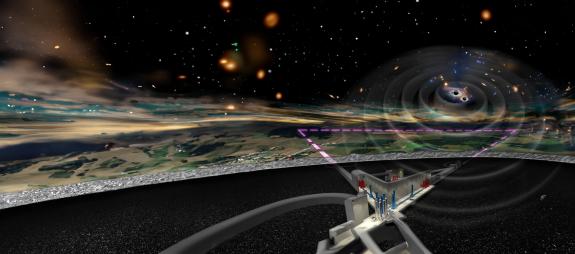In 2016, researchers succeeded in directly detecting gravitational waves for the first time. These waves were a distortion of space-time caused by the collision of two black holes around 1.3 billion years ago. Albert Einstein had already predicted the existence of such waves in his theory of relativity in 1916, but until 2016 they could only be observed indirectly. Detection was possible because measurement sensitivities orders of magnitude smaller than the diameter of a proton were achieved in order to measure tiny changes in space-time. This direct observation confirmed Einstein's theory and opened a new window to explore the universe, as gravitational waves provide us with information about cosmic events that are difficult to detect by light alone.
This discovery marked the beginning of gravitational wave astronomy and led to the award of the Nobel Prize, as it laid the foundation for new insights into extreme cosmic phenomena, such as black hole mergers and neutron stars.
Here at the Institute of Applied Physics, we are working to help shape the next generation of gravitational wave telescopes using state-of-the-art micro- and nanotechnology. As a partner of the Einstein Telescope, which is currently being developed by scientists from all over Europe, we are helping to research new methods for stabilizing lasers and improving mirror reflection in the telescopes.
We invite you to discover the exciting world of gravitational waves together with our researchers. You can conduct your own experiments on an interactive interferometer and understand the basic principles of physics. Learn how gravitational waves are created and measured and which technologies we are developing for this purpose. Come along - we look forward to your visit!

